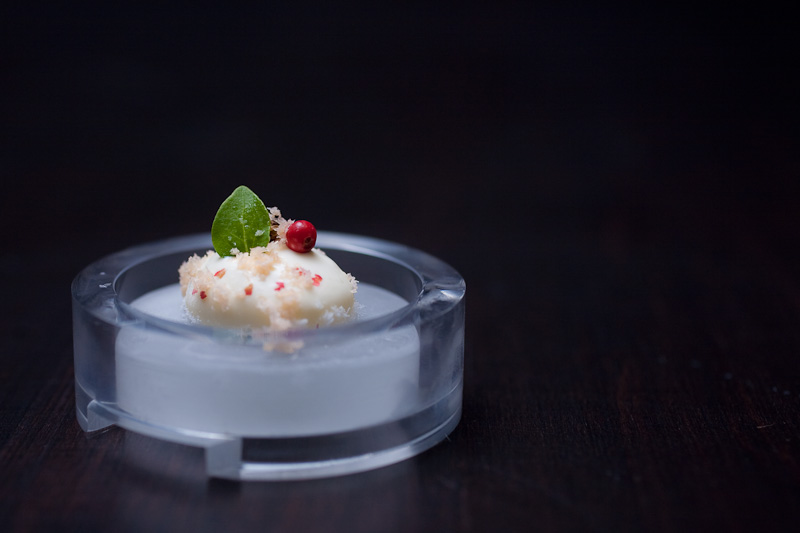
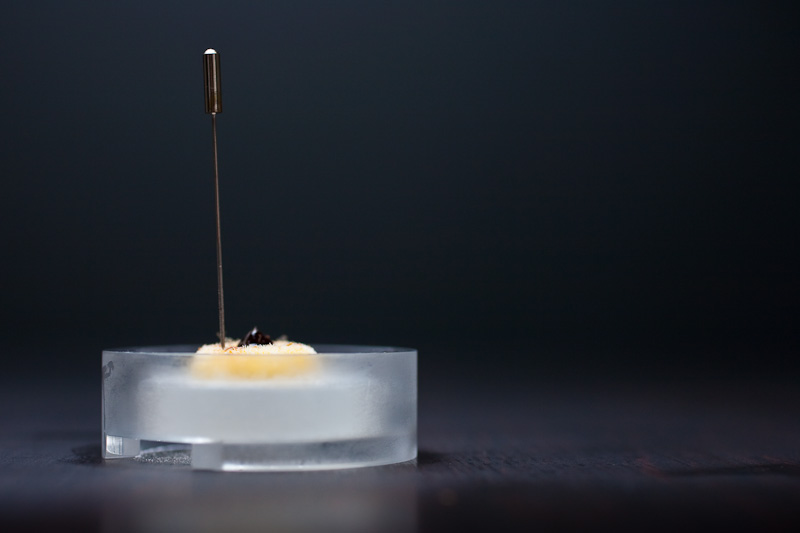
“When you’re driving along the freeway with 18 kilos of dry ice in your passenger seat, it’s probably a good idea to keep your windows rolled down a bit”
This was sage advice from Mike at BOC Gases in Petone, a town about 20 minutes up the road from Wellington. BOC’s offices were smaller than I expected, consisting of a small ‘showroom’ with lots of exotic security gear for working with exotic chemicals (the coolest was something that looked like a welding mask but had an electronic LCD shutter as its viewport) and a large garage filled with dozens of large cylinders filled with things I’m positive my mom wouldn’t want me playing with. As soon as I stepped out of my car I was struck by the extremely-odd smell hanging in the air.
I was there to buy dry ice; they told me on the phone that I needed to provide my own container, so I was armed with my friend Keith’s very large cooler. 5 minutes and $50 later, I was on my way home to play. There are two recipes in the Alinea book that require the use of an antigriddle, so before I went about preparing the ingredients for these dishes in full, I wanted to make sure this would work.

Dry Ice is frozen carbon dioxide. Specifically, it’s compressed carbon dioxide snow. It’s sublimation point is -79C, so it’s several times colder than water. The most-typical applications for dry ice are shipping perishable items and setting the mood for your rave. I wanted to try using it to make an at-home antigriddle. The Alinea book, when describing the use of an antigriddle, never uses phrases like “set your antigriddle to -50C”, leading me to believe the device doesn’t have that level of control. It’s probably just either “off” or “hella cold”. This is good, because I’m not going to be able to control this stuff too easily.
I have a couple of baking trays that are heavy-duty and have a nice lip on them, along with some other sheets that are completely flat. I thought I’d first try putting some dry ice in the lipped tray, then top it with a flat sheet. Dry ice, when it sublimates against warm metal, vibrates as the gas escapes. It causes a sound akin to nails on a chalkboard, so there was a period of 5-10 minutes or so where I was filling the trays with ice and greatly-disturbing Sarah’s “So You Think You Can Dance” viewing.
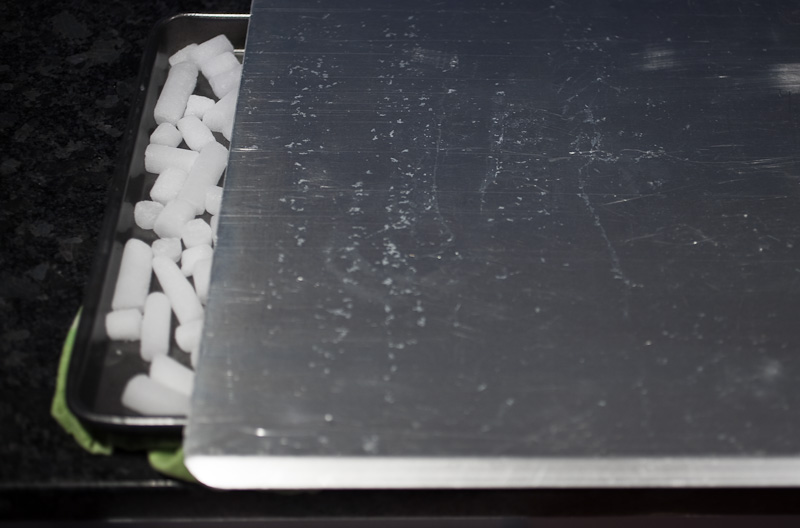
The gap between the top sheet and the dry ice, though, was causing a bit too much insulation and I thought it might be better to have direct contact of the ice against the metal. So I stacked another baking tray into the bottom one, then flipped the entire thing over. The (upside-down) bottom tray pressed the ice up against the upside-down topmost tray, and I ended up using the bottom of the topmost tray as my ‘cooking’ surface. Within minutes it was completely covered in frost.
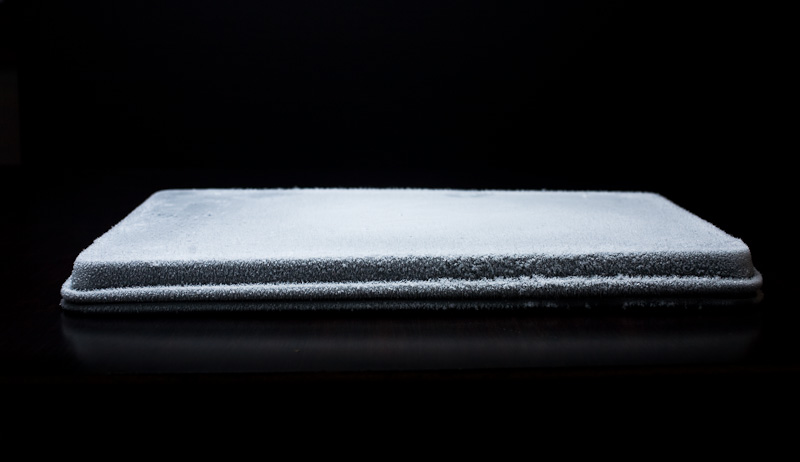
I’d made some mango puree earlier that I wanted to try on this. It worked like a charm immediately. The puree looked a lot like cooking fish on a skillet: the bottom changed color and the longer it sat on there, the higher the ‘line’ differentiating the temperature of the puree moved. I admit I wasn’t really sure what to expect out of this; what it ended as was sort of like over-frozen ice cream. I could move the puree disc around in my mouth like a lolly for a while, and it was so cold it had no flavor until it started to melt. The coldness also tended to mute the flavor, I found (which was the same experience I had when making frozen lettuce in a previous dish).
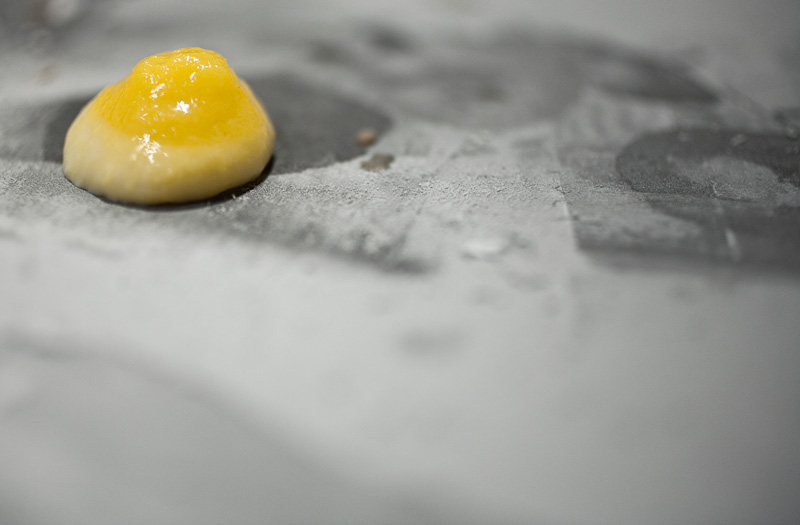
Since I had everything set up, I wanted to play with some other things. I squirted some Hershey’s syrup onto my antigriddle, and some homemade bbq sauce. The syrup had an interesting texture: it never froze completely, but turned into something like a gel, with rich flavor. The BBQ sauce’ visual transformation was pretty extreme, and it was fun to taste: it melted slowly, and was pretty robust. I’m curious about playing with this more in the future.
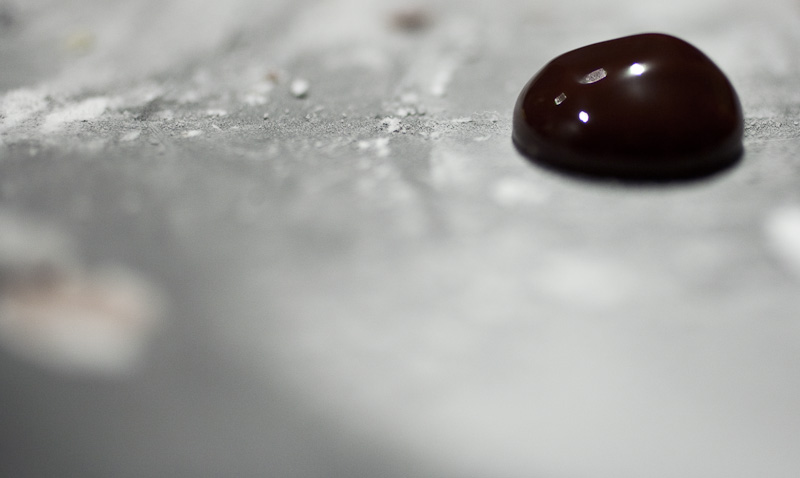
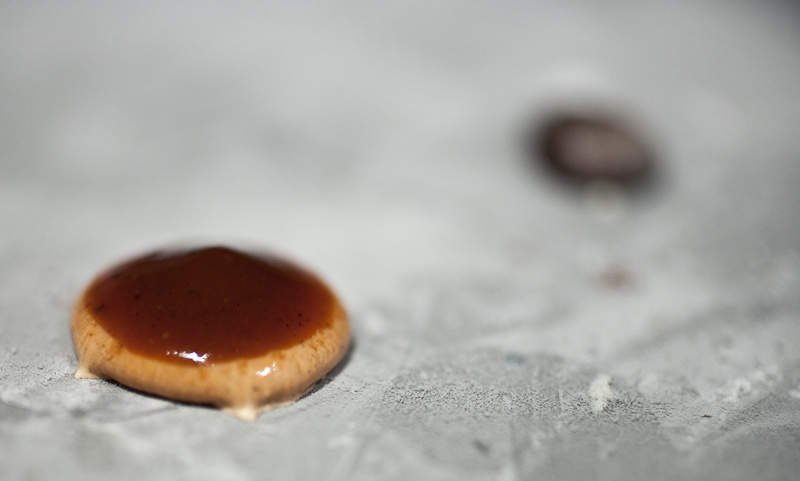
I broke everything back down at this point; since I confirmed this would work, I needed to prepare all the rest of the ingredients. I planned to take this to a friend’s for Thanksgiving dinner and actually execute the dish there. You know, some frozen sour cream and mango puree, like grandma used to make.
Before I completely shut down the fun factory for the night, though, I tried one last experiment: dry ice mixed with alcohol produces a bubbly mixture that can drop well below the freezing point of water. So sort of like a poor man’s liquid nitrogen (which BOC also sells, incidentally). I dropped a few chips into a cup of Tanqueray, and let it sit for a few minutes, then dropped a basil leaf in. The leaf turned a pretty-surreal shade of green that I’d never seen before. I picked it out with some chopsticks and dropped it on my countertop, and it shattered. It had been flash-frozen. Pretty cool. Also interesting was that within a few seconds, the basil shards had warmed back up to be floppy again.
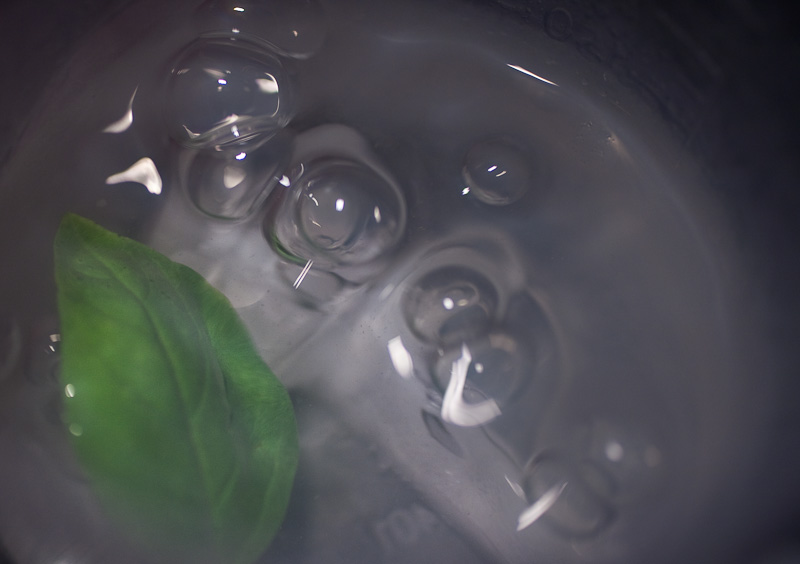
Because of the sensitivity of this whole setup, I wanted to go ahead and knock out both of the Alinea recipes that require the Antigriddle. The first is Mango, Bonito, Soy, and Sesame. This dish involves a ‘donut’ of mango puree that’s filled with sesame oil and soy pudding, topped with bonito flakes. I set up the antigriddle in my photo studio, and set my camera taking a photo every 10 seconds while I worked. This was cool until I realized that I can’t draw a perfect circle, so there were a LOT of photos of sloppy, sad-looking mango rings that I’m sparing you here.
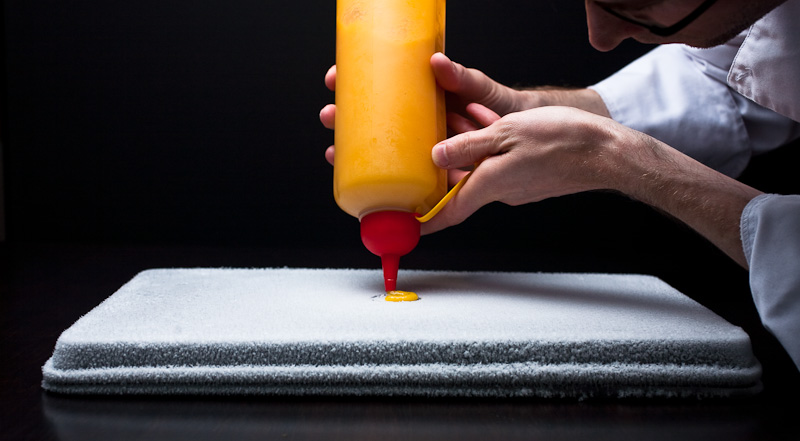
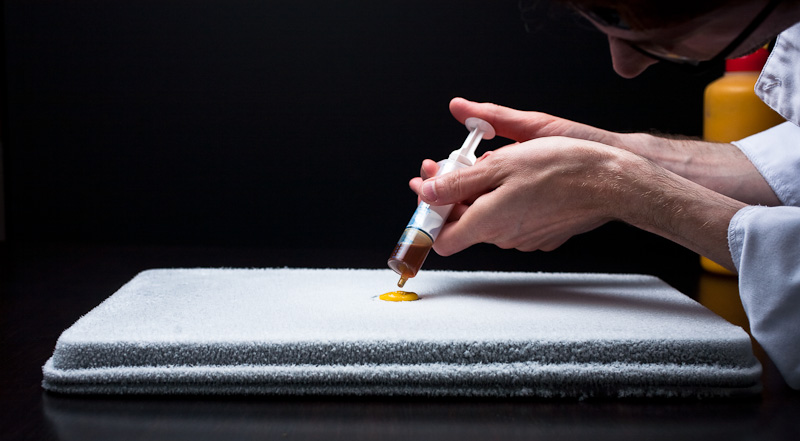
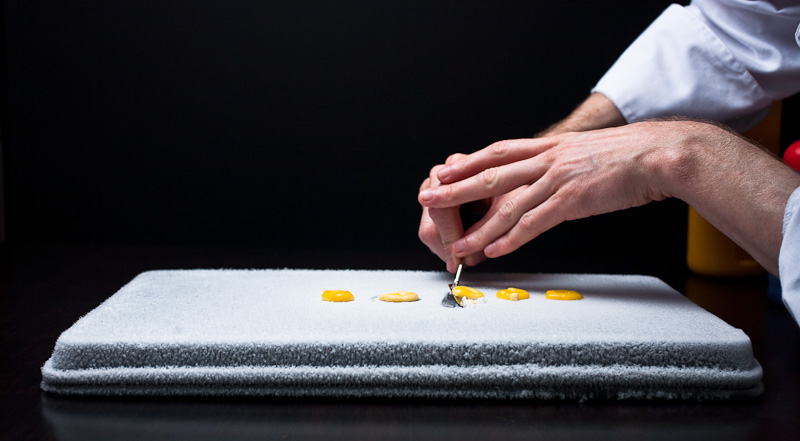
After several tries, though, I finally made a few that I thought might pass muster with Chef Achatz. And as for taste, this one was interesting, though not my favorite thing I’ve made so far. There’s a nice progression of flavors, with the salty soy being the first real taste, bleeding into the bonito, and ending with the sweet mango as the disc melts in your mouth. The texture is a bit like over-frozen ice cream.
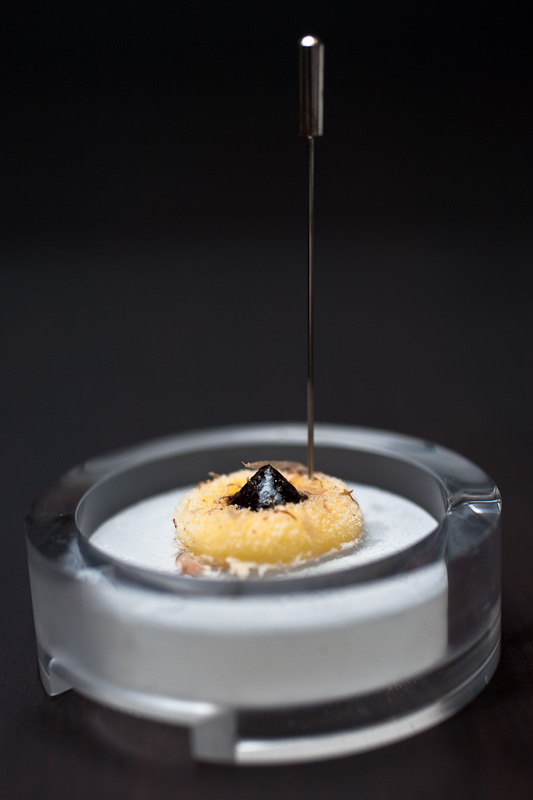
The second dish was Sour Cream, Sorrel, Smoked Salmon, and Pink Pepper. This was far easier to assemble, mainly because the thicker sour cream was much more controllable to squirt onto the griddle. I enjoyed this one more, despite finding the flavors predictable. It’s very much the sum of its parts, but the sour cream has an incredibly luxurious feel as it melts in the mouth. I’m interested to know what wine is paired with this an Alinea.
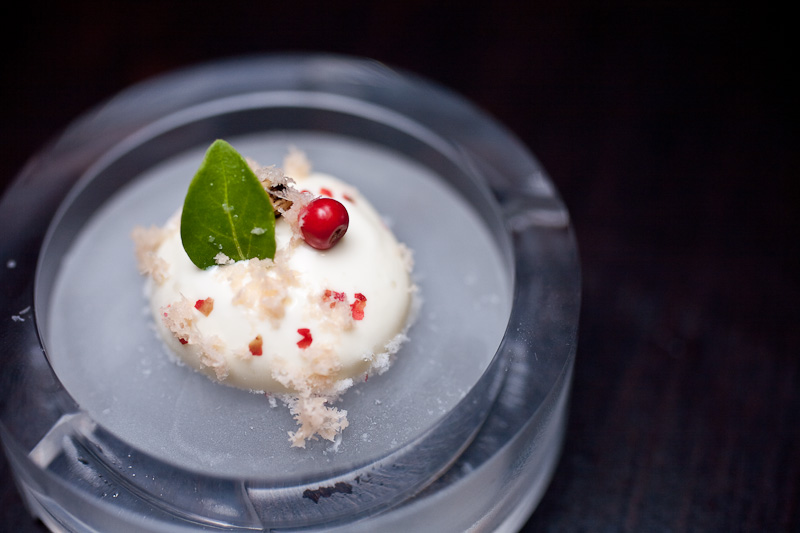
And finally, I thought I’d show what happens when you dump several pounds of dry ice in your bathtub and pour a little hot water in.
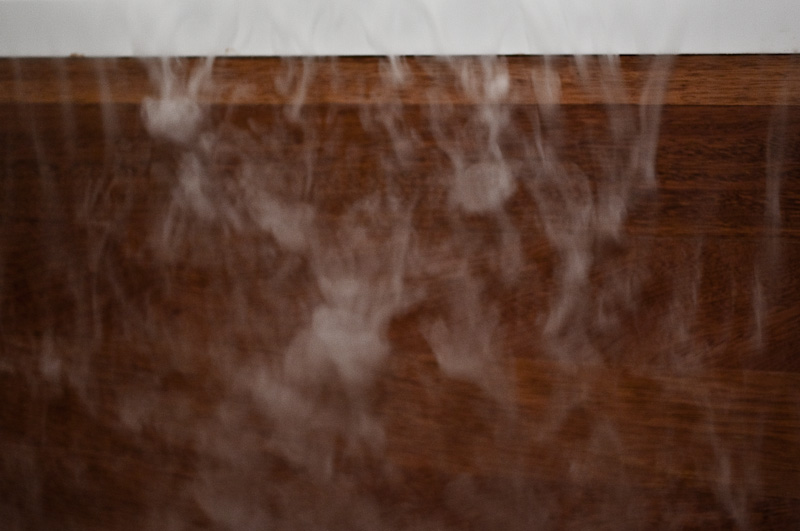
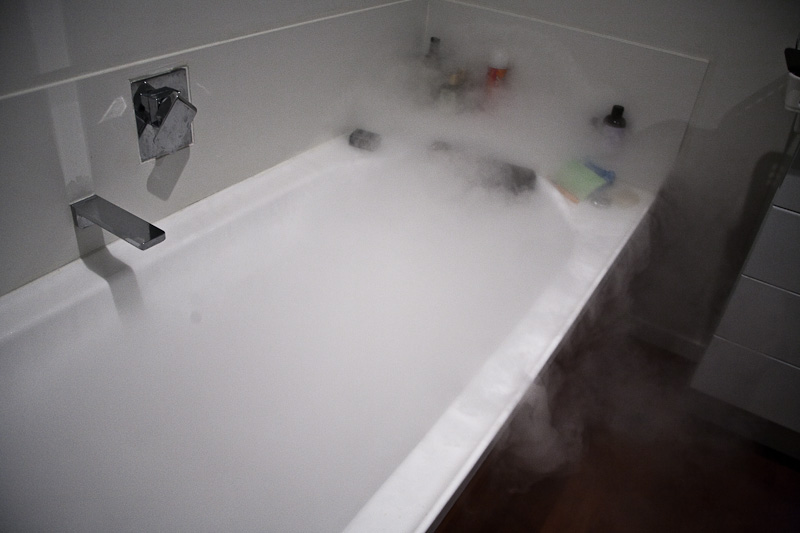
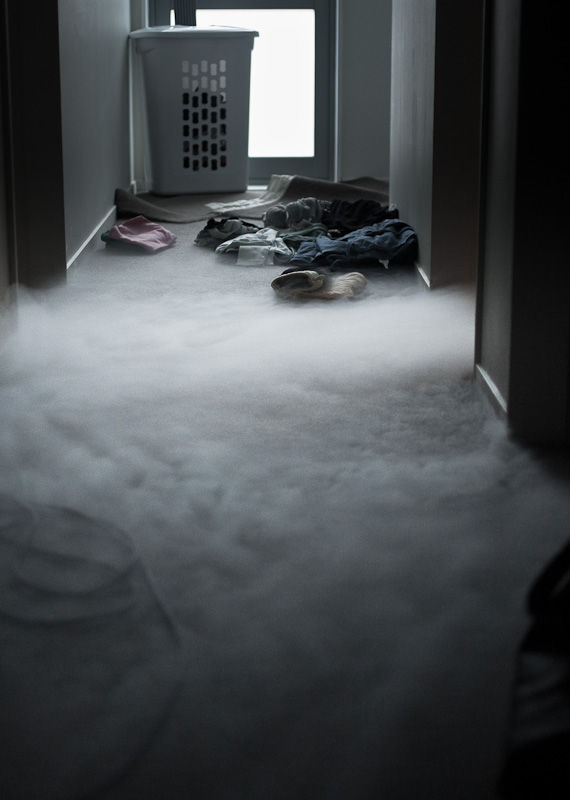
I did the mango soy recipe back in the summer using the same sheet pan technique, very nice alternative to the pricey anti-griddle. I threw my leftover dry ice in the swimming pool and had the same smokey effect 🙂